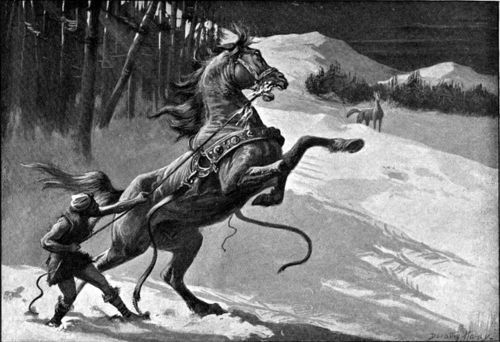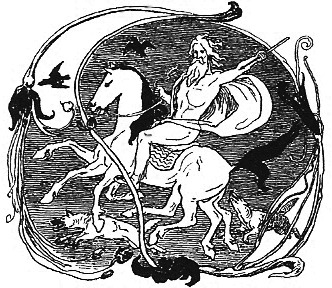#svadilfari
I find myself in strange need of a fic where Thor has to face Loki’s “Seven Evil Exes” Scott Pilgrim style.
thor: so, after I beat your seven evil ex boy-and-girlfriends…
loki:exes.
thor: right, after I beat all the ex boy-and-girlfriends—
svadilfari trots out, whipping his mane
loki: hey, svad!
thor: *slowly turns and stares at loki*
loki: like I said, exes.

My take on the Svad/Loki story-
Loki is a young prince when Odin hires a Jotun to build a wall around Asguard- believing he will be unable to finish in the time promised and agreeing to his ridiculous terms (which includes his wife). The Jotun only has a single giant horse under his enslavement, which Loki discovers is a handsoms Vananheim shape shifter. They totally bang.
To prevent the giant finishing his task when it becomes clear he can meet the deadline Loki frees the enslaved shifter and shows him how to return home through one of the portals hidden around Asguard.
By the time the war between the Aesir and Vanir had ended, Asgard’s walls had sustained significant damage. With the defences as they were, Asgard was vulnerable to attack by any of its enemies, most notably the Jotunn. It was at this time that a man arrived, seated atop a fine white stallion, who volunteered to rebuild the shattered walls. He boasted that his walls would be the strongest in all the world’s tree.
Such a claim would not be easy to accomplish, and the gods feared such a task would not be easy to afford either. On asking, they found the man's price was Freya’s hand in marriage, the sun, and the moon. It was an outrageous demand. Furthermore, Freya was one of the Vanir hostages, living with the Aesir as per the terms of the recent war’s treaty. Handing one of the hostages off to an unnamed stranger was not likely to promote good relations with the Vanir.
But Loki, skilled in avoiding payment (especially to the dwarves who had built Mjolnir), introduced a shrewd plan to the Aesir. They would limit the man to only three years, and the man would not be allowed any help. If the man did not finish the wall in those three years, as was surely impossible anyway, he would have failed to keep his end of the bargain, so the gods would not be required to pay. Even if the walls were not completely rebuilt, to have even a small portion rebuilt for free was ideal.
When presented with the terms of this agreement, the man agreed, on the condition that he be allowed the use of his horse, Svadilfari. The gods were initially confident that they would gain a wall for free, but in the months during which the wall was being built, it soon became apparent that they had been wrong to make such a deal. With the help of Svadilfari, the man was completing the walls at an alarming rate, and it was clear he would indeed be finished within the three year limit.
The gods were unwilling to part with Freya, the sun, and the moon, so they demanded that Loki find a solution for them to avoid payment. The plan had originally been Loki’s, even if the other gods had agreed to it, so Loki was the one blamed for the situation. If he did not find them a way out of the deal, the gods threatened, Loki would be tortured and killed under the brunt of their rage. Furthermore, the Aesir had an image to maintain, so whatever solution Loki employed, it had to be one that maintained the farce that the gods were treating the deal fairly.
Killing the mason or his horse, or worming out of the deal with words and loopholes would only make the gods appear dishonourable, so Loki was limited in what he could do. But Loki’s cunning had never met an obstacle it could not overcome. He took the form of a mare to draw the man’s horse away from the construction. On seeing the beautiful mare, the stallion Svadilfari immediately reared up, broke free from the cart to which he was attached, and ran off after the mare.

The mason searched for his horse all night, but to no avail. He eventually returned to the wall, attempting to complete the task himself. But without his horse, he could not complete the wall in time. The gods informed the mason that since he had not completed the task, he would not be paid. The man had been foiled by his own horse’s lust, so there was no way he could blame the gods for breaking the deal.
The gods attempted to dismiss the man without his pay, but the man was frustrated at his loss. He revealed himself to be a Jotunn in disguise, and began to smash up all he could in his rage. Surrounded by gods though, he was ultimately defeated by Thor’s hammer Mjolnir. Loki returned some time later, having produced a foal by the stallion Svadilfari. He named the foal Sleipnir, and presented it as a gift to Odin. The foal had eight legs, and grew to be the fastest and best horse in all the world’s tree. It was a very fine gift.

Loki had thus acquired the strongest of fortifications for Asgard for no pay at all, and he had produced for Odin the fastest horse in the realm. Although Loki had given the gods a scare when his original plan had seemed doomed to fail, he was never to be bested by troubles, and he always redeemed his mistakes to the benefit of Asgard.
